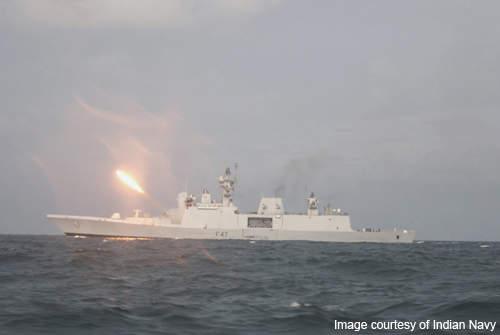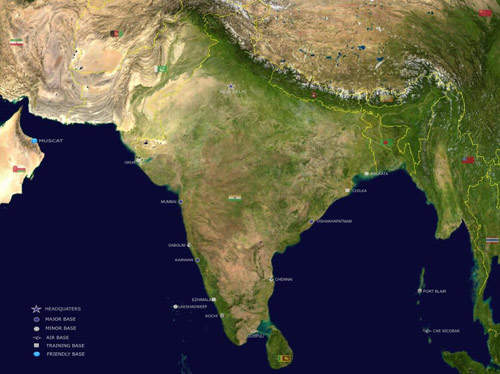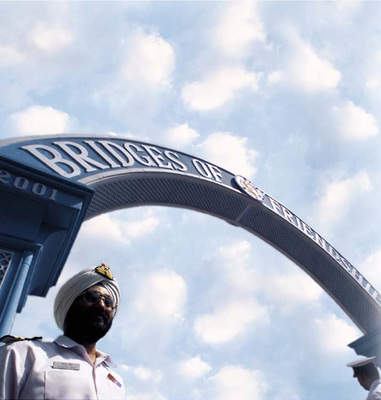Shivalik Class frigates are multirole stealth craft built for Indian Navy. They are the first Indian warships to be built with stealth features and will be the lead frigates of the country’s navy during the first quarter of the 21st century.
The lead ship of this class is named ‘Shivalik’, after the lowest of the Himalayan ranges, which extends to 2,500km. The frigates to follow were also named after other mountain ranges – ‘Satpura’ and ‘Sahyadri’. They are being produced as an upgrade to the Talwar Class frigates, which will be succeeded by the Project 17-A Class frigates.
Shivalik Class frigates are 143m long and 16.9m wide. They have a displacement of 4,900t and run on gas and diesel turbines. These frigates include unique stealth features and land-attacking capabilities. Shivalik Class frigates can carry a crew of 257, including 37 officers.
The structural, thermal, and acoustic stealth features make them less detectable to the enemy. The radar systems and engines are further modified to reduce and avoid detection and noise levels. Fitted with Klub anti-ship and BrahMos supersonic cruise missiles providing strong attacking capabilities. The fire control systems used on these frigates are developed by DRDO and built by Bharat Electronics Limited (BEL).
Programme
Project 17 was conceptualised by the Indian Navy to design and build stealth frigates in India. In 1997, the Indian Government approved the order for three frigates. In February 1998, regarding the same order, a letter of intent was released to the shipbuilders Mazagon Dock Limited (MDL).
The Directorate of Naval Design (DND) framed the initial design for the Project 17 Class frigates. This design required 5,000t stealth frigates with advanced suppression and management features. The final and detailed design was developed by MDL.
In 1999, the Indian Navy placed an order for three frigates under Project 17. Production began in 2000 due to the delays of design inputs for weapons suite by the Naval Design Bureau (NDB), changes in the hull steel specifications, and delivery delay of high-strength D-40S steel from Russia. To overcome the steel supply problems, the required AB-grade steel was indigenously developed by the Defence Research and Development Organisation (DRDO) and the Steel Authority of India.
Indian Navy plans to secure a total of 12 frigates in different phases.
Shivalik orders and deliveries
In 1997, the Government of India placed an order worth INR8.1bn with MDL to construct and deliver three frigates under Project-17. Each frigate is expected to cost $650m.
Construction
The vessels were built in 172 modules through modular construction. Construction of the first frigate began in December 2000. In July 2001, the keel of this frigate was laid, and it was launched and named Shivalik in April 2003. In February 2009, the frigate underwent sea trials before being commissioned into the Indian Navy in April 2010.
The keel of the second frigate, Satpura, was laid in October 2002 and launched in June 2004. It was commissioned in August 2011. The keel of the third frigate in the class, Sahyadri, was laid in 2003 and launched in May 2005. It was commissioned in July 2012.
All three frigates received the initials ‘INS’ (Indian Naval Ship) when commissioned with the Indian Navy.
Countermeasures / sensors
These frigates are mounted with MR-760 Fregat M2EM 3-D radar, an air search radar, HUMSA (hull-mounted sonar array) and ATAS / Thales Sintra towed array systems, BEL Aparna fire control radar and BEL Ajanta weapons control radar to counter attack the enemy.
Weapons
Shivalik is fitted with a mix of indigenous Russian, Indian, and Western weaponry and sensor systems. The weaponry systems include the Russian Shtil surface-to-air missile systems, Klub anti-ship cruise missiles, and Israeli Barak-I missile defence system.
The Satpura frigate has weaponry worth INR1bn including vertical-launch missiles, surface-to-air missiles, and anti-submarine systems.
Propulsion
Shivalik Class frigates are driven by combined diesel and gas (CODOG) propulsion system. Two Pielstick 16 PA6 STC diesel engines deliver 7,600shp at 1,084rpm each and two GE LM2500 gas turbine engines deliver33, 600shp at 3,600rpm.
In March 2009, the commissioning of the first frigate was delayed due to the stoppage of fitting the turbines due to GE’s failure to secure permission from the US Government for such installation. After two months, permission was granted for the installation. The propulsion system gives a maximum speed of 32kt with CODOR engines and 22kt with diesel engines for the frigate
Aircraft
The frigates can carry two advanced helicopters. The Shivalik carries two HAL Dhruv or two Sea King mk42B and the Satpura carries two K-31 Kamov helicopters.
The Global Naval Surface Combatants and Warfare Systems Market 2011-2021
This project forms part of our recent analysis and forecasts of the global naval surface combatants and warfare systems market available from our business information platform Strategic Defence Intelligence. For more information click here or contact us: EMEA: +44 20 7936 6783; Americas: +1 415 439 4914; Asia Pacific: +61 2 9947 9709 or via email.




